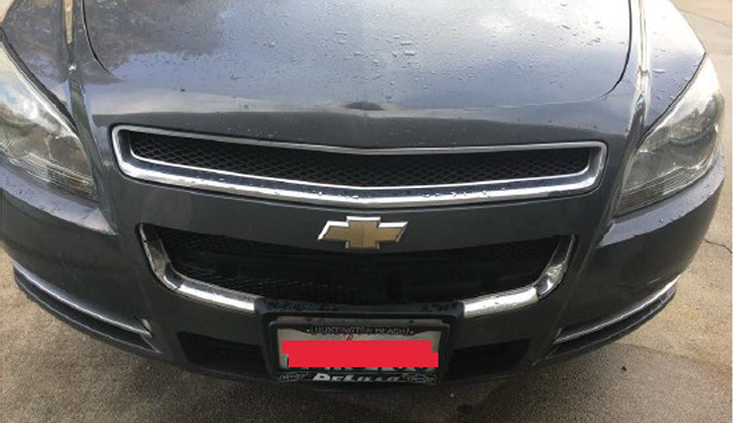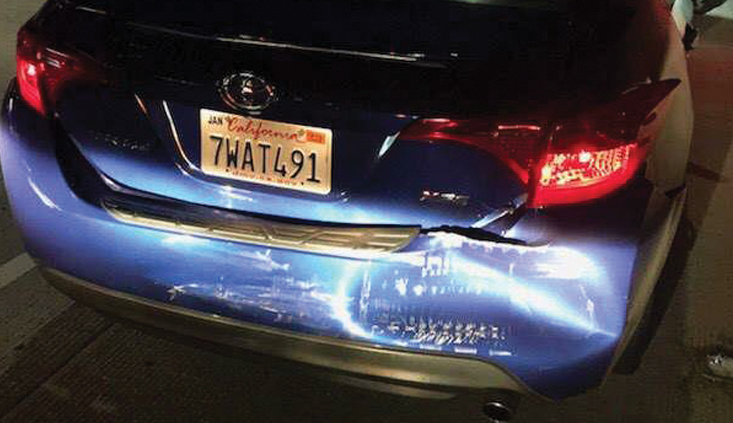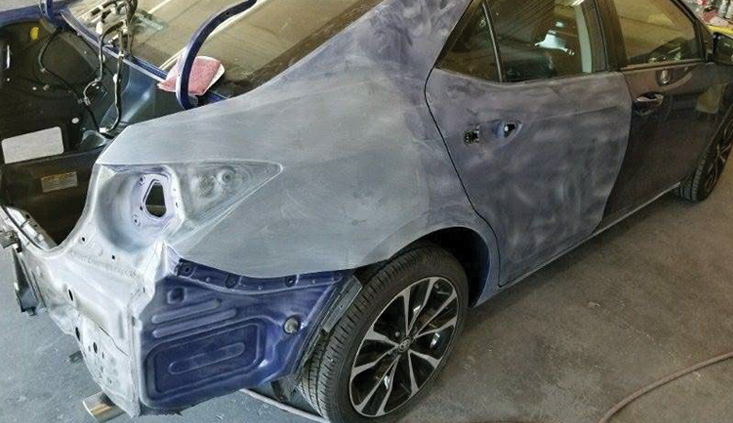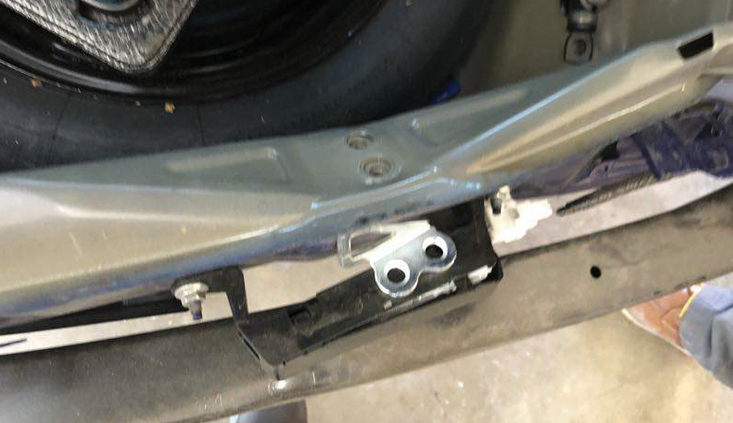Using event-data recorders in your vehicle-accident cases
EDRs record and store data that can be used to prove both liability and severity of the impact for injury causation
Photo courtesy of EXPLICO, Los Angeles. www.explico.com
A new client walks in your door one day and says she’s been hurt. She was in a minor T-bone collision, the other driver is blaming her, and there was no police report. She also has prior injuries to the areas she says were hurt, but the crash made the pain worse. The property damage photos are uninspiring, and she has a mound of prior medical records to search through.
Do you take the case? You know the insurance company will blame the prior crash for her injuries. They’ll say the most recent collision wasn’t big enough to cause permanent injury. In this he-said-she-said scenario, they may only accept 50% liability. In the end they may not pay, and if they do, it surely won’t be reasonable.
As we have all experienced, the quest for truth in our cases is often masked in uncertainty. Crash sequences, poor memory, and lack of witnesses can make it challenging to unravel how a collision occurred. These cases scare away the best of us, but they don’t have to.
Event-data recorders (“EDRs”) can help immensely. EDRs capture a treasure trove of valuable data we can use to prove our cases. This article delves into EDRs, their significance, capabilities, and potential to deliver answers. It will then turn to practical applications you can use from case intake through trial.
What is an EDR?
EDRs are devices in vehicles that capture and store data. The data relates to the vehicle’s operation and performance and is held in the EDR’s memory for a certain time (or number of ignition sequences). It includes vehicle speed, acceleration, braking activity, steering inputs, seatbelt usage, airbag deployment, engine performance, Delta-Vs, and Delta-Ts, among other things. Some advanced EDRs may have GPS technology to track location and movement.
When an event triggers the EDR, such as a sudden impact or airbag deployment, it captures and stores the vehicle’s data immediately before, during, and after the incident. This can provide valuable insights into the circumstances surrounding a collision, helping you and your experts reconstruct and assess the factors contributing to a crash and injuries.
How do you retrieve EDR data?
EDR data is typically stored in a protected memory module within the vehicle. Retrieving this data requires specialized equipment and expertise. The data recorded and the expertise required to download it can vary. Big rigs require specific expertise and only a handful of folks (in comparison to the many qualified for other vehicles) are qualified to retrieve big-rig EDR data. Moreover, the retrieval and interpretation of EDR data must be conducted in compliance with legal regulations to ensure admissibility.
A crash-data retrieval (CDR) certification enables an expert to download certain information from vehicles. In becoming certified, experts have the choice between as little as a one-day class, and as much as a five-day class, depending on what they’d like to be certified in. In general, the more advanced the classes, the more the expert is permitted to retrieve and interpret. To ensure accurate and reliable retrieval of EDR data, make sure you consult with qualified experts in EDR technology. This will ensure the data is admissible.
How do attorneys and experts use EDR data?
When asked to write on this topic, we were excited to explain the practical applications behind EDR. Both sides to a dispute can use and capitalize on EDR data, or the lack thereof. Knowing the defense arguments and your counter-arguments can help. Using EDR information to your advantage can turn a dud of a case into a dandy.
Crash reconstruction and human factors
Crash-reconstruction experts can utilize EDR data to support the plaintiff or defendant’s theory of liability. For example, EDR can tell the speed of a vehicle leading up to a crash, as well as acceleration and deceleration rates. It can discern whether the operator hit the brakes or attempted to avoid the collision. It can also tell the speed of the vehicle at impact, which leads to Delta-V and Delta-T figures.
EDRs also record data points before and after a crash. This includes braking activity, steering inputs, seatbelt usage, airbag deployment, and engine performance. EDR data, combined with other physical evidence, can aid in the analysis of vehicle dynamics. Coupling speed with the weight of vehicles and angle of impact, this can help experts determine Delta-V, impact severity, and injury potential. Often, EDR simply has a printout of a Delta-V (provided the crash registered).
EDRs can provide timing and sequencing of events. They often have time stamps for recorded events like braking, impacts, and turning movements. These can be used to buttress an expert’s opinion on how the crash occurred or impeach party or witness statements to the contrary.
Lastly, human-factors experts can use EDR data to render important opinions. For example, if a driver braked 1.2 seconds before hitting a pedestrian, the human-factors expert can use that number to come up with perception-reaction time, and thus the ability to avoid a collision. These opinions will help adjusters, defense attorneys, and ultimately jurors determine liability.
Injury mechanics and potential
Injury potential or threshold in car wrecks (i.e., “biomechanics”) is an expertise created by State Farm in the 1990s. As you might imagine, State Farm was getting sick of paying out on claims where there wasn’t much visible property damage to the vehicle. This expertise was born, and every insurance company has used it since to undercut damages by using Delta-Vs, Delta-Ts, and “scientific” articles.
Delta-V means a change in velocity. For example, a Delta-V of 5 means that the movement in your client’s vehicle is akin to a car being completely stopped, then propelled to 5 mph in a fraction of a second. As you might imagine, the higher the Delta-V, the higher probability of injury.
Delta-T is the time measured between the impact at 0 mph and the car going 5 mph. This is typically in hundredths of a second, but depends on the nature of the impact, whether it was a bumper-to-bumper impact, override, etc. The shorter the Delta-T, the higher probability of injury.
Delta-Vs and Ts can be used to support your case, helping you argue there is injury-causing potential. Be mindful of what injury your client is claiming. If a torn rotator cuff, the trauma mechanics need to be like someone throwing a baseball very hard or falling to the ground with an arm outstretched. If it is a cervical-spine injury, the trauma should be shearing or a back-and-forth action. If it is a lumbar spine injury, the trauma should be compressive and shearing to the lumbar spine. There are countless other injuries, so plan your case accordingly.
Also be mindful of how this crash occurred. If it’s a bumper-to-bumper collision, it will result in a higher Delta-V and lower Delta-T; which increases likelihood of injury. If it is an override collision, it will result in a lower Delta-V and higher Delta-T; which decreases likelihood of injury. Moreover, if the EDR does not register a Delta-V, the defense will argue the impact was below a Delta-V of 5. Be mindful of these claims because often the studies don’t say what the expert claims.
A case study on using EDR data
Everyone has heard the adage, “When the facts are in your favor, argue the facts; when the law is in your favor, argue the law.” At times, neither the facts nor the law will be in your favor. We have been blessed (or cursed, depending on your perspective) to try a few cases where the EDR data, the facts, and the law didn’t support the case.
Last year, we tried a case called Noriega v. Preston in Santa Monica. It was a four-car collision, but there was only cosmetic damage to the defendant’s car, and our client was third in line, so there wasn’t much visible damage to his Toyota either. This is a case we did not want to try, but given the posture of the defense, were forced to. It’s a case many of us encounter every day.
Sure enough, the defense designated a biomechanical expert. His folks downloaded the EDR data and upon review, it didn’t look good for us; the EDR did not register a Delta-V. In that case, the defense biomechanic’s opinion was this was a Delta-V of 4. We want to make a big point here: Don’t designate a biomechanical expert affirmatively. I always wait to designate them supplementally because honestly, they really confuse the issue for the jury. Our goal is to always present a very simple case.
Using the defense expert’s studies against them
Defense biomechanical experts use studies to interpret Delta-Vs. Make sure you look at the studies, who wrote them, who paid for them, and all the details. Often, they are paid for by the insurance industry. Some are performed by notorious defense experts, backed by insurance companies, with a preordained conclusion they seek to prove. Other studies are done out of country, with no statistical significance.
We recall two comedic examples of this. In 2016 we tried a case where the defense biomechanic relied on one study. In it, two Russian brothers ran their car into a brick wall 15 times and didn’t get hurt. They also relied on studies using “Rusty the Crash Test Dummy.” Rusty gets in huge crashes with a neck brace, pads, and knowledge a crash is about to occur. Again, not relatable to our case and great cross fodder for biomechanical experts.
Using priors and age degeneration to your advantage
Most crash studies are performed on healthy people. The folks running the studies are ethically required to not put the participants in danger. Accordingly, they have participants fill out questionnaires and often have them undergo pre-study MRIs to ensure they are perfectly healthy. Very few of our clients are perfectly healthy. So, if you get a minor-impact collision, and the potential client has priors, rejoice!
In Noriega, I made sure to ask the biomechanical expert about these studies. I made the following points: (1) the studies he relied on have ethical concerns; (2) the ethical concerns require the participants to have a pre-study MRI and no prior low-back pain; (3) if the potential participants have a 2 mm disc bulge or “moderate” degeneration or greater, they can’t participate; (4) they are not allowed because they could get seriously injured; (5) Mr. Noriega has a prior from seven years ago and the defense expert says he has “moderate” degeneration. Therefore, Mr. Noriega wouldn’t be able to participate in the study even at a Delta-V of 2.5.
Additionally, make the point that no study looks at injury thresholds for folks who have pre-existing conditions. Every biomechanical expert will agree we do not know the injury threshold for pre-existing conditions, what it would take to aggravate them, or make them worse. When you ask the questions, use language in CACI jury instructions 3927 (Aggravation of Pre-Existing Condition) and 3928 (Unusually Susceptible Plaintiff). You must get that language in to put those instructions in front of the jury at the end of the case.
Using literature to undercut EDR trustworthiness
While preparing for the cross in the Noriega case, we came across literature regarding EDR trustworthiness. We had no argument against the claim that, if the Delta-V did not register, then it must have been below a Delta-V of 4, until we found these studies. They helped me immensely in preparing for, and ultimately executing, a good cross-examination. They can be used, however, no matter where you are in your case.
One study found EDR can underreport Delta-V by as much as 12 miles per hour. This was important because my expert, who claimed the Delta-V was significantly higher, said on the stand that EDR data can have flaws. This study proved it and is admissible to be quoted under Evidence Code section 721. Make sure your expert agrees with these studies and explains them to the jury. If they don’t, you can always use them on cross with the defense expert. Not that it will change the defense expert’s mind, but it can lead to jurors questioning the defense story.
Attack defense with property damage documents
Make sure you subpoena the damage estimate and photos the mechanic took while repairing the vehicle. If you have frame damage, you should jump for joy. Make sure you get that information from the defense expert in deposition. Call the mechanic who prepared it to overcome Sanchez objections at trial. Establish that the body shop technicians needed to put it on a frame rack, use a steel pully, and pull/bend the frame back into place. Many times the frame then requires welding. Ask the body shop tech how long it took to repair the frame; you may be surprised.
See the photos above from the Noriega case, which were taken in the body shop. You can make better points – both visual and in questions – using these when directing and crossing experts.
When using estimates and photos, make comparisons jurors can understand. In closing, ask the jury, “If this crash bent a steel frame and it took technicians four hours to repair it with a frame rack and steel pully, could it have damaged the discs in this man’s spine?” Let them answer the question themselves.
The defense biomechanical expert is not a medical doctor
It is also important to point out that biomechanical experts are not medical doctors. This is important because juries are often misled by the defense attorneys calling them “doctor,” and presume they can give opinions on medical causation. They cannot testify about medical causation unless they are a medical doctor, so be sure to establish that the expert: (1) is not an M.D.; (2) is not giving medical opinions; (3) can’t say whether plaintiff actually sustained the claimed injuries; (4) can’t say whether plaintiff aggravated a pre-existing condition; (5) can’t even say if plaintiff was actually injured.
Creating asymmetry in the defense opinion
Next, point out the asymmetry in the defense expert opinions. Most will say things like “the Delta-V shows this crash was similar to activities of daily living.” Find ways people sustain the injury your plaintiff sustained, then make points the jurors will understand. For example, studies say people can herniate a disc in their neck and low back by sneezing. Others show people herniate discs by bending down and picking up a box or jumping in the air. Establish these admissions to prove even small things can herniate or injure discs. Then, hopefully, the jury will understand this “minor impact” crash was big enough to do the damage we claim.
Lastly, ask the defense biomechanical experts if they have ever given the opinion that this type of crash has caused this type of injury. Often, they’ll admit they have never given that opinion, and it is impossible to sustain the injury. This gives you a great opportunity to polarize the case and make their position look ridiculous.
Conclusion
Remember, you can use all these arguments throughout your case. When you bring in the case, ask questions about priors. Get the damage estimates for all cars involved in the crash. Obtain photos of repairs at the body shop. And if the defense asks whether they can download the EDR data from your client’s vehicle, give permission, subject to them providing all download material to you. It will help you save money and at the end of the day, may help you provide justice for your client.
If you are interested in the deposition and trial cross of the expert in the Noriega case to see how we set it up, please email us. We are more than happy to help.
Talayeh Goody

Talayeh Goody is the founder of Goody Law Group, LLP. She attended the University of California, Irvine (UCI) and graduated with a BA in International Studies. She attended the Thomas Jefferson School of Law in San Diego and graduated cum laude in 2014. She opened the Goody Law Group in September 2019.
Greyson M. Goody

Greyson Goody is a partner at Goody Law Group and the Simon Law Group. He attended Thomas Jefferson School of Law in San Diego. There he met fellow Simon Law Group attorneys Brandon Simon, Sevy Fisher, Evan Garcia, and Travis Davis as well as his wife, Taly. Greyson is a proud member of the Consumer Attorneys Association of Los Angeles, Consumer Attorneys of California, Orange County Trial Lawyers Association, and the American Board of Trial Advocates.
Copyright ©
2025
by the author.
For reprint permission, contact the publisher: Advocate Magazine




